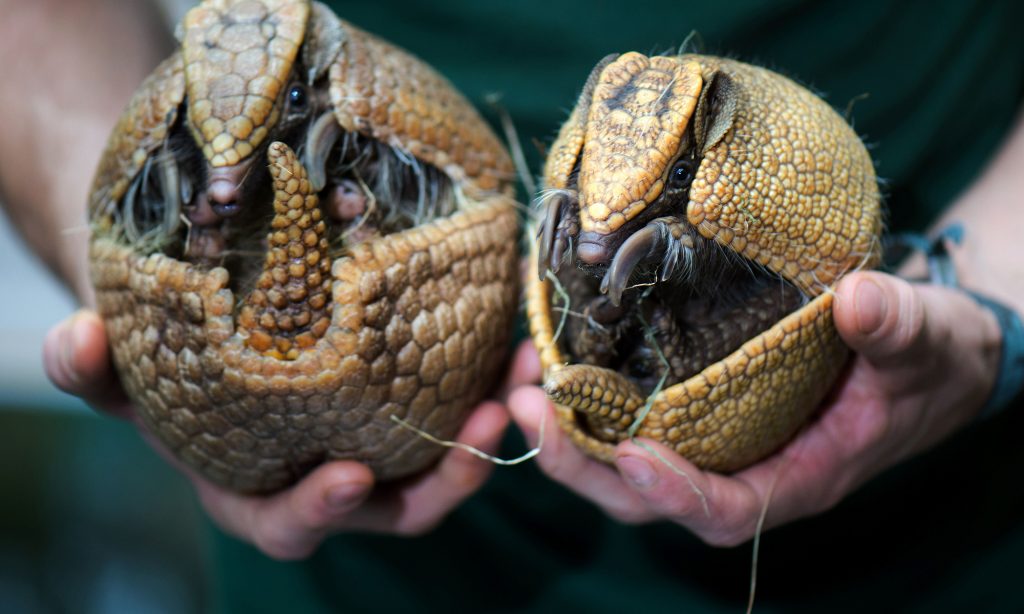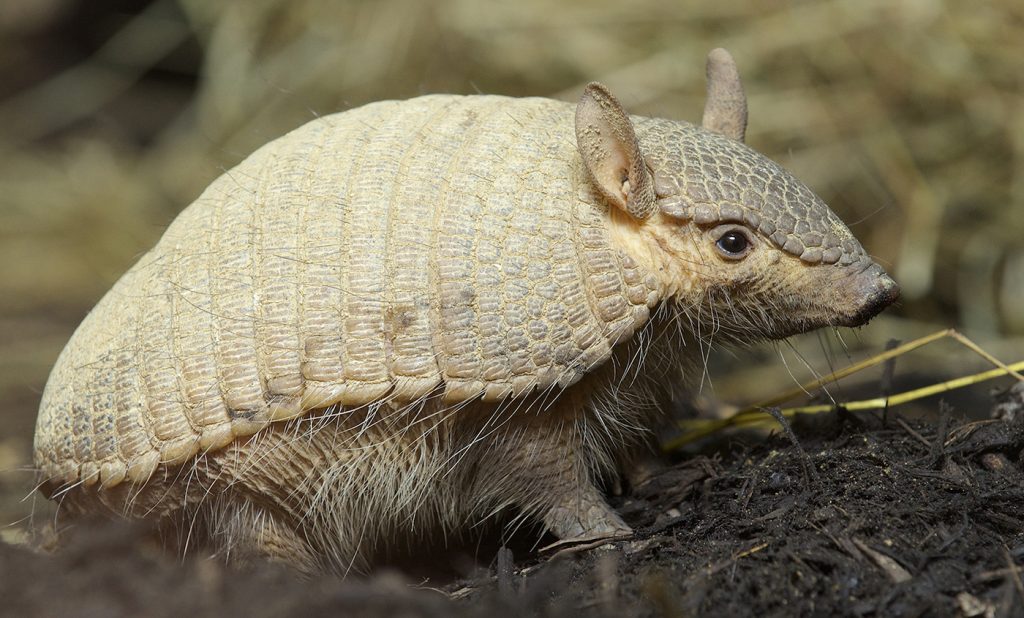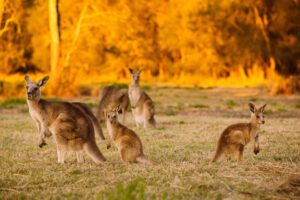Armadillos have a wide variety of warm habitats depending on species. Habitats can range from tropical rainforests to grasslands, dry deserts and savannas. Armadillos do not like cold weather because of their low metabolic rate and their lack of fat stores.
Most Armadillos are omnivores. Different Armadillo species have different diets. Some eat insects, grubs, plants, fruit and small invertebrates, however, a majority feed entirely on ants and termites (formicivorous). Armadillos usually forage for food in the early mornings and evenings.

Armadillos are solitary, mostly nocturnal animals that do not share their burrows with other adult Armadillos. Armadillos tend to sleep for long periods up to 16 hours per day. Armadillos are very good swimmers having a very efficient dog-paddle and they can remain underwater for around 6 minutes.
For the Armadillo to be able to swim, it has to inflate its stomach and intestines with air otherwise it would just sink due to the weight of its armour. They can also jump around 3 feet straight up into the air when alarmed. Armadillos mark their territories with secretions from their face, feet and rear.
Depending on species, the gestation period of the female Armadillo can last anywhere between 60 – 120 days. In some species such as the Nine-banded Armadillo, delayed implantation occurs whereby the young are not born until 8 months after mating takes place. This aids their ability to colonize new areas. Female Armadillos give birth to 4 identical infants of the same sex, which is not known of any other animal.

All 4 infants develop from the same egg and share the same placenta. Infant Armadillos do not have armour, instead they have a soft leathery skin which hardens as it grows. Infants are weaned at around 10 weeks. Armadillos reach sexual maturity at between 3 – 12 months. The life span of an Armadillo is around 15 years in captivity.














